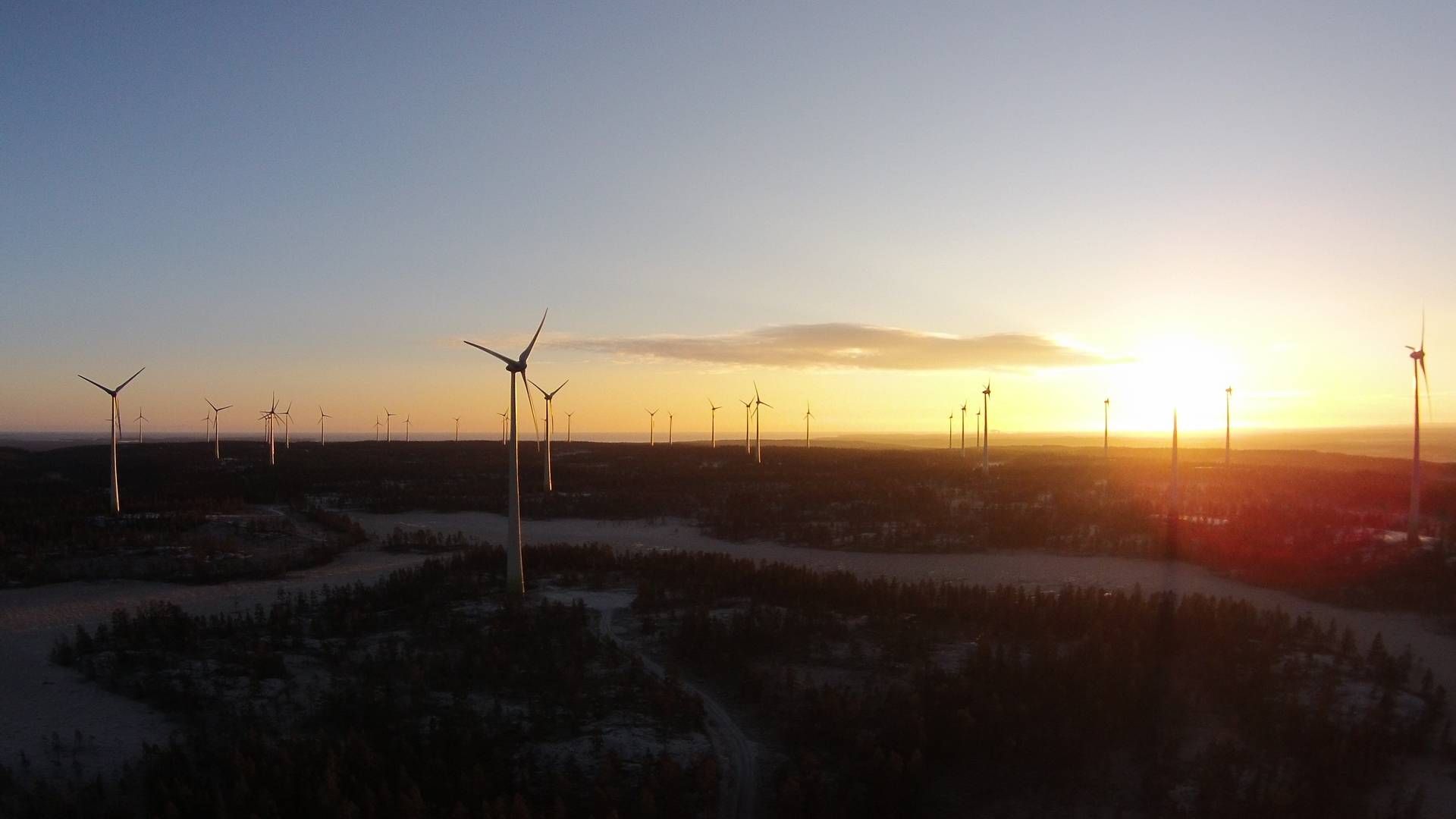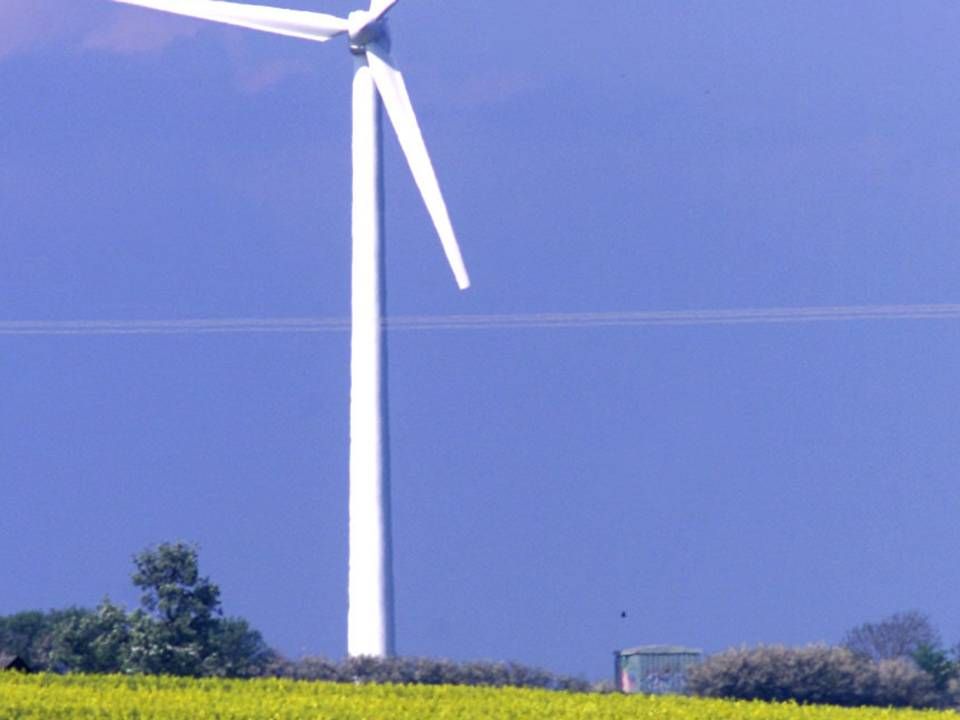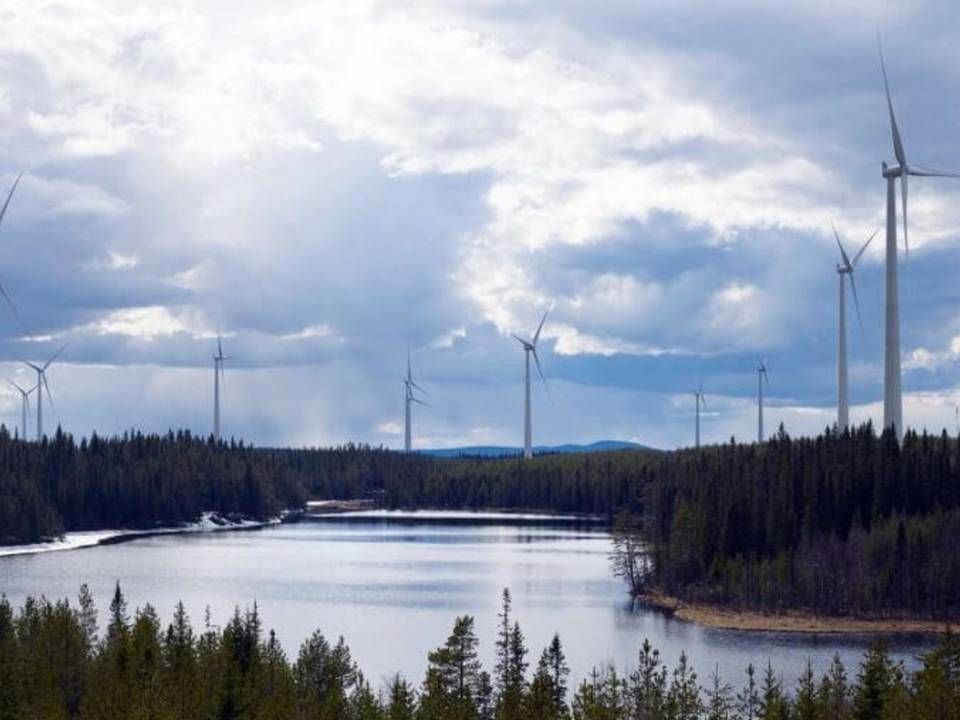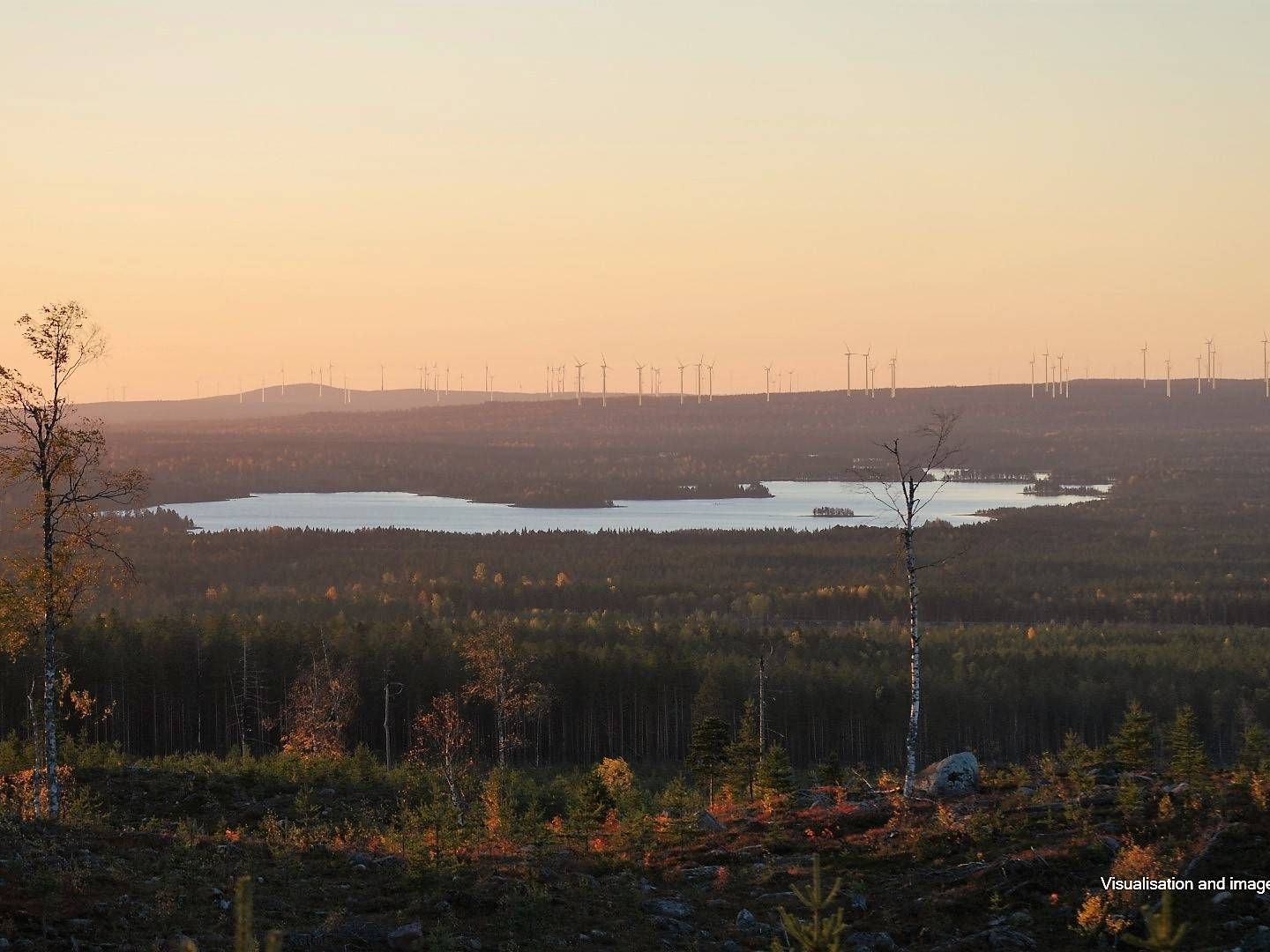Wind subsidies sent to hospice at anniversary party

STOCKHOLM
"Progress and visions are formed by opposition. You exemplify this. That's why we are here today," said Swedish actress Lena Endre at the opening of the domestic wind sector's annual conference Vind, held at the decommissioned brewery Münchenbryggeriet, with a view over Riddarfjärden in the heart of Stockholm.
And there was certainly plenty to celebrate, as was evident from the white, blue and yellow fondant icing on the cakes placed on the tables among the event's participants. Representatives from competing sector players such as Vestas, Siemens Gamesa, GE, Enercon and Nordex – to name only wind OEMs – sat smiling while waiting to cut out generous slices of the confectionery. There was indeed cake enough for everyone in the Swedish wind power business – in both a figurative and literal sense.
In the third quarter of 2019, final investment decisions were taken on a combined project capacity of 686 MW, whereby Sweden has installed a total of 2.7 GW within the last 12 months, the Swedish Wind Energy Association (SWEA) concludes in a new report presented at the Vind 2019 event.
This marks a record for the Scandinavian country and cements its status as Europe's current hottest market for onshore wind.
"But we must remember to celebrate. This is an anniversary party," SWEA Chief Executive Charlotte Unger said at the event.
Unger's initial 'but' is worth unpacking, but let us first dwell a bit on the festivities, marking the tenth iteration of the conference – a ten-year anniversary that also featured a record number of participants and the first time the event drew more than 1,000 party guests. The Swedish wind sector is in the midst of growing pains and has attracted sweet-toothed attendants from Japan, Lithuania and the US, all of which came to get a piece of the pie.
The congregation was praised from the main stage by trade association WindEurope's CEO, Giles Dickson.
"You have a fantastic job. Excellent," Dickson said and stretched out his arms from the stage as if embracing the industry: "More than 8 GW of wind, you can build it without subsidy, and you are the navigational stars within European PPAs. Magnificent work," the CEO said – and then came the odious 'but' once again.
"But," he began and pointed with agitation as if to bust the inflating self-satisfied balloons of the audience; "there are no guarantees that this expansion will continue."The four dark horsemen
Even though the Swedish wind sector in the midst of a hitherto unseen boom, problems loom on the horizon – four major issues, to be exact. The biblical Book of Revelations might call these quandaries the Four Dark Horsemen of the Apocalypse.
Well now, it might not be quite that ominous, but the allegory nonetheless remains fitting, in that the wind industry will most likely be able to overcome one or two of these problems in sequence – but if all four arrive at once, what might be called Europe's most powerful wind market could be facing its end of days.
John of Patmos named the horsemen Death, Famine, War and Pestilence .
In the context of Swedish wind energy, we may call them the Certification Ordinance, Offshore Wind, The Electrical Grid and Popular Support.
In the coming time, EnergyWatch will give a closer look of these four issues. The first exegetic exercise will consider the certification ordinance, the country's subsidy scheme, which has gradually become a larger and more painful headache for the sector in step with the momentous capacity expansion.
Certificates sent to hospice
Bluntly put, the certificate system is a technology-neutral subsidy scheme for renewable energy: Each MWh generated from newly established facilities is subsidized with a sum from a politically defined pool. As this pool remains constant, the price of certificates declines in correlation with rising demand.
At the Vind 2019 event, Sweden's government clearly announced for the first time that it wanted to terminate the scheme.
"I have nothing against ending the certificate system," says Energy Minister Anders Ygeman (Social Democratic Party) from center stage as sighs of relief could be heard from the audience.
The graph tracking Sweden's onshore wind expansion could very well be turned on its head when considering the price of certificates issued from January to September this year; from SEK 186 (EUR 17.3) to SEK 51 (EUR 4.74) per MWh. The public support scheme is in free fall, and prognoses from developer Svevind forecast a full collapse before 2021.
"This is a problem, because it creates uncertainty for early investors. Politically, it's important that investors who entered the process early on are not punished. At the moment, that's exactly what is being done," Unger says.
The Swedish Green Party, a member of the governing coalition, is in favor of shutting down the aid scheme.
"We're currently waiting for the certificate system's demise. It's important that we think in the long term, and the system will be a challenge to investments," says Green Party Energy Spokesperson Lorentz Tovatt.
The scheme was implemented in 2002 and has been consistently renewed with new certificates, the most substantial of which was issued in 2012 and enabled transnational trading with neighboring Norway, which created a de facto integration between the Swedish and Norwegian public support systems.
In 2017, the scheme was extended with a further 18 TWh ending in 2030. The certificate system would thereby cover 46.4 TWh annually ahead to 2030. However, the ordinance was overtaken by reality.
"New projects don't calculate state aid into the budgets. In part because they know that the system is about to collapse, in part because they don't need it," Unger says.
For projects that have been under development for a longer period, the plummeting certificate prices constitute a concrete problem, as subsidies could end up becoming a mere fraction of what they had originally expected.
On the deathbed
The certificate system has thereby almost played out its role and has been carted off to a hospice, decimated and fatigued after years of energetic capacity expansion. The question is now when to shut off its life support and how to provide a modicum of comfort during its final days.
"I cannot divulge precise information on the time horizon for eliminating the certificate scheme, nor can I say anything about whether something else will substitute a phase-out process. Those are matters we are discussing in the government, and we expect to present a clarification quite soon," says the Social Democratic Party's energy spokesperson.
The government is namely sitting on a problem. It cannot immediately scrap the ordinance. That would be the ultimate punishment for early investors, for whom the system created a problem in the first place.
"The number of certificates and term durations ought to be distributed. Whether these have, for example, terms of seven or 15 years. Then investors would know how much they will receive over a given period, and we would get a stable closure of the certificate system," Unger says.
Here, the extension of the scheme back in 2012 constitutes a problem. Whereas Swedish wind energy is running at full throttle, there are several indications of market fatigue in Norway tied to popular opposition that has spurred Oslo to cancel a framework deal for further expansion. The question is then whether Norway and Sweden are equally eager to shut down the subsidy scheme.
"It's a question of who ends up in government. Will it will be an expense only covered by Sweden? Or will it be shared? If the bill is split, certificates could clearly be issued to cover a longer period than if we also must pay for the Norwegian side," Unger says.
The Norwegian question
Ygeman was candid in saying that the negotiations with Norway would be decisive for how the scheme ends up being discontinued.
"It makes sense to integrate with Norway. We think we could more or less have the same time frame, because the system is no longer relevant," Ygeman told Reuters.
If the Norwegians won't budge, SWEA would prefer to come up with a more favorable way of phasing out the ordinance and with shorter time frames rather than continuing with the current scheme.
"Even if we end up with a less favorable phase-out process and we have to pay for Norwegian aid, it would be preferable to the current situation," Unger adds.
The end of the scheme is a bittersweet experience for the wind sector. On the one hand, support is, of course, always pleasant – but independence from the public system is a triumph for the industry.
"We are no different from other industries. We can do this without aid, so naturally we will. Both nuclear and hydroelectric power have received support in the start-up phase, and so have we. But now we can stand on our own legs. We are a mature industry with a mature technology," Unger says, as one of the industry's most pressing problems seems to have been solved before becoming acute.
And thus remain the three other horsemen: Offshore wind, The Electrical Grid and Popular Support.
English Edit: Daniel Frank Christensen
Norway and Sweden to end onshore wind aid
Norway shoots for taller wind turbine height restrictions
Sweden tops European wind expansion
Related articles
Norway and Sweden to end onshore wind aid
For subscribers
Norway shoots for taller wind turbine height restrictions
For subscribers




















.jpg&w=384&q=75)




